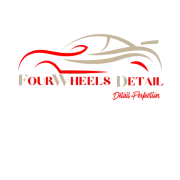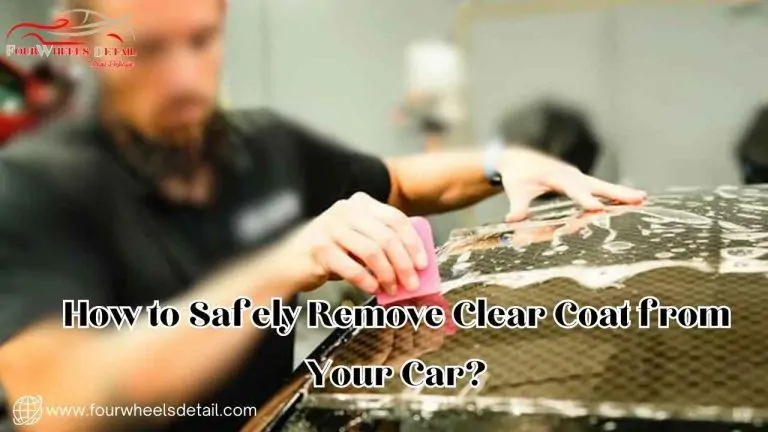Learn how to safely remove the clear coat from your car with proven methods. Professional clear coat removal can cost $500–$1,500, depending on the extent of the damage and location, but DIY options can be effective for smaller areas. Careful removal is essential to avoid paint damage, which could lead to further costly repairs. Discover easy, safe techniques and find out when it’s time to seek expert help. Start restoring your car’s finish today!
Table of Contents
ToggleUnderstanding Clear Coat
What is Clear Coat?
Clear coat is the transparent top layer of a car’s paint job that protects it from UV rays, oxidation, and minor abrasions. It keeps the paint vibrant and glossy.
Why Remove Clear Coat?
Over time, clear coat can become damaged due to sun exposure, scratches, or chemical exposure. Removal might be necessary to restore the paint, repair worn sections, or apply a custom finish.
Assessing the Damage
Inspect the Paint
Examine your car’s paint to understand the extent of the clear coat damage. Look for peeling, uneven areas, or faded spots, which will help you decide on the right removal method.
Consider Professional Help
If the clear coat is deeply damaged or you lack experience with car detailing, consider consulting a professional. They have the expertise and tools to remove and reapply clear coat without damaging the paint.
Safety Precautions and Tools Needed
Safety Gear
Use gloves, goggles, and a mask to protect yourself from chemicals or dust generated during the process.
Essential Tools
- Sandpaper: Start with 400-600 grit for initial removal and move to 800-1000 grit for smoothing.
- Buffing Machine: Useful for even application of rubbing compound.
- Microfiber Cloths: Soft cloths to avoid scratching the paint.
Optional Tools
- Chemical Clear Coat Remover: These can simplify the process but require caution.
- Paint Sealant: Essential for reapplying protection after removal.
Methods to Remove Clear Coat

Choose the method that best suits the level of damage and your comfort level.
Method 1: Sanding (Manual)
- Step-by-Step
- Start with 400-600 grit sandpaper. Keep the surface wet while sanding to prevent overheating.
- Gradually increase to finer grits (800-1000) to smooth out any rough patches.
- Tips: Work in small sections and don’t rush. Wet sanding is slower but safer for beginners.
- Common Mistakes: Avoid sanding too deeply as this could reach the paint layer.
Method 2: Buffing (Mechanical)
- Step-by-Step
- Apply a rubbing compound with a buffing machine at low speed.
- Work slowly and steadily across the surface, using consistent pressure.
- Tips: Keep the buffer moving to avoid excessive heat in one spot.
- Tools Required: Buffing machine, rubbing compound, and polishing pad.
Method 3: Chemical Clear Coat Remover
- Products Used: Solvent-based clear coat removers are available but require precision.
- Application Instructions: Apply a thin, even coat, wait for the specified time, then wipe off with a cloth.
- Cautions: Leaving the chemical on too long can damage the underlying paint. Work in a well-ventilated area.
Post-Clear Coat Removal: Refinishing the Surface
Cleaning the Surface
Thoroughly clean the surface to remove any leftover dust or chemical residue from the removal process.
Applying a New Protective Coating
Consider applying a fresh layer of clear coat or ceramic coating to protect the paint. This will also give the paint a professional gloss.
Polishing and Buffing
Finish with a high-quality polish and buffing for a smooth, shiny look.
Common Issues and How to Avoid Them
- Uneven Removal: If you notice uneven patches, use fine-grit sandpaper to smooth these areas out gradually.
- Accidental Paint Damage: If you sand too deeply, touch-up paint or professional assistance may be needed to restore the area.
- Future Protection: Regularly apply wax or sealant to protect the new finish and clear coat from future damage.
FAQs
Can I remove clear coat without damaging the paint?
Yes, with patience and the correct techniques, you can remove clear coat while preserving the paint layer underneath.
How much does professional clear coat removal cost?
Professional removal can range from $500 to $1500, depending on the extent of the job and local rates.
How long does the clear coat removal process take?
DIY removal can take a few hours to several days, depending on the method used and the extent of damage.
What should I do if I accidentally damage the paint?
Light damage can be corrected with touch-up paint, while extensive damage might require professional repainting.
Can you fix clear coat coming off a car?
Yes, you can fix it by sanding the damaged area, applying a new clear coat, and polishing to blend it. For extensive damage, professional repair is recommended.
Will rubbing alcohol remove clear coat from a car?
Rubbing alcohol generally won’t remove clear coat if used in diluted form, but high concentrations or prolonged use can degrade it over time.
What grit sandpaper to use to remove clear coat?
Start with 400-600 grit for initial removal, then move to 800-1000 grit to smooth and prepare the surface.
Will acetone remove clear coat on a car?
Yes, acetone can strip clear coat, but it may damage the paint underneath, so it should be used very cautiously.
Does WD-40 remove clear coat?
No, WD-40 doesn’t remove clear coat. It can temporarily improve the appearance but is not effective for removal.
Does toothpaste remove clear coat?
Toothpaste is mildly abrasive and may polish minor scratches but isn’t effective for clear coat removal.
Does car polish remove clear coat?
Car polish can thin the clear coat over time but isn’t intended for full removal. It’s generally used for surface-level scratches and shine.
If you want to learn more about car cleaning and detailing, you can look more on our website fourwheelsdetail.com

Hi! I’m Harry, With over a decade of experience in car detailing and cleaning, I specialize in restoring vehicles to their pristine best. Passionate about sharing expert tips on fourwheelsdetail.com, I’m here to help readers maintain their cars’ beauty, from paint protection to tackling tough stains.

